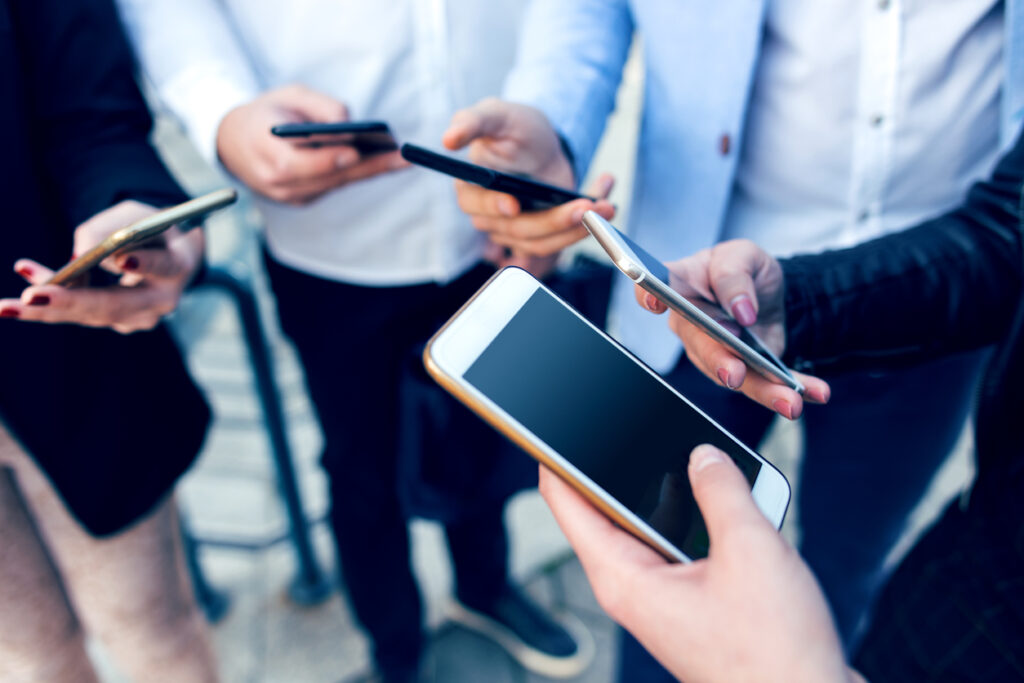Almost half of employers now offer staff access to health and wellbeing apps, with the aim of reducing stress, anxiety and depression, according to Aon’s latest Employee Benefits & Trends Survey.
And with a combination of the Prime Minister’s commitment to tackling mental health, the CIPD’s call for UK corporations to establish human capital reporting standards and the launch of the government-commissioned independent Stephenson / Farmer Thriving at Work Review, the pressure is on for companies to address the elephant in the room.
But do apps represent the answer?
Reports suggest that adding more technology into our lives is in fact detrimental to mental health. We’re already suffering from a crisis of attention, which sees nearly 50% of us feeling distracted and unhappy, largely attributed to digital distraction and overload.
Introducing another app into our lives could therefore be more detrimental than beneficial to an employee’s mental health.
Or could it? If we’re all in the habit of using our smartphones all the time anyway, directing our attention to mindfulness activities could actually be beneficial and with far-reaching implications considering the size of the audience.
Here we put forward the arguments for and against.
The case FOR apps
Anonymity
Whilst public awareness of the importance of good mental health has never been higher, it remains a taboo subject, particularly in the workplace. Time to Change Research shows that 49% of people feel uncomfortable discussing mental health issues with their employer.
An app is therefore an attractive tool for those nervous about openly discussing issues, and can be used privately by an employee at their own pace.
The more sophisticated apps can also tailor content for the user with personalised short and long-term goals.
A millennial mindset
As digital natives, apps particularly appeal to those in the 18-34 year old bracket.
And, according to a report from Yahoo, reported on in AdWeek, millennials are the driving force behind an 88% growth in fitness and health-related apps. With physical health and resilience at the top of their digital agenda, it stands to reason that the younger generation will also engage well with mental health apps.
Apps are available 24/7, which appeals to the on-demand culture to which the younger generation are accustomed. They also provide an alternative tool for those reluctant to engage with more traditional mental health services such as Employee Assistance Programmes (EAPs).
Budget friendly
Apps provide a relatively low-cost mental health service for companies without the budget to offer more costly tools and services.
The absence of trainers, experts and counsellors means no manpower costs. Resource-heavy programmes come with the risk that employees might simply choose not to use them.
The relative low cost of apps also allows access to all, meaning even those without an identified ‘issue’ can benefit. For example, every employee in an organisation could gain from the mindfulness tools and tips offered by an app, such as breathing and relaxation techniques or good sleep practice.
The case AGAINST apps
Isolating the issue
Whilst anonymity is attractive for some, the fact that apps seemingly negate the need for social interactions is a concern for others.
Identifying or addressing an issue via an app might reduce the likelihood of an employee discussing it with a friend, family member or mental health professional. This could result in a misdiagnosis, or the wrong type of help and advice for a particular issue.
That said, if apps are used correctly, they will signpost to appropriate support in the ‘real’ world sphere.
When a deeper level of help is required, apps fall short in isolation. Issues such as depression and anxiety, for example, can be worsened by internalisation: a problem that is more likely to occur if the employee is unable or unwilling to share the load with another person.
It should be noted though that quality app providers would be the first to declare that such devices are not meant for cases of clinical depression or anxiety.
Digital overload
Reports suggest that smartphone use is associated with symptoms of anxiety and depression. In other words, using a mental health app could in fact be counterproductive.
The research found that the more participants used their smartphones, the more likely they were to experience symptoms associated with stress and anxiety.
Credibility concerns
Currently, no governing body exists to regulate the quality of content included on mental health apps, raising concerns around their credibility.
Some apps that claim to improve mental health issues are not based on any clinical evidence. Whilst NHS Digital is taking steps to implement regulation, developers currently have free rein over their content and claims.
A question mark therefore exists over the safety and effectiveness of some mental health apps, and employers should be careful to offer only those with credible, clinically backed and evidence-based content.
These include apps such as Thrive, which helps users detect, prevent and self-manage mental health conditions. This app is being added to the options on Health Shield’s tailored Health Cash Plan this May, with a view to extending its reach as part of a programme of wellbeing services
Another is Remente, a goal setting app that includes self-help techniques based on cognitive behavioural therapy.
The adviser’s view
Whilst there’s clearly a case for and against the use of mental health apps, many Employee Benefit Consultants are united in the belief that like all mental health services, apps should be used as part of a much wider mental health and wellbeing strategy.
Anna Spender, Director of Actuarial & Data Analytics at employee benefit consultancy Pyson explains:
“Technology is just a tool and the key to the success of supporting the mental wellbeing of your employees is all about initial and sustained engagement. The employer still needs to create a culture that is open, supportive and breaks down the stigma around mental health otherwise whatever apps, platforms or other technology you put in place your employees are unlikely to use them.”
Debbie Kleiner-Gaines, Workplace Wellbeing Consultant at PES Wellbeing adds:
“The key here is to focus on a well-rounded strategic, cross-departmental wellbeing strategy that uses a framework such as [Mind’s] Five Ways to Wellbeing. Connection is one of the five ways, so implement a strategy that creates opportunities for human interaction alongside sensible tech.”
Meanwhile, if a report by Deloitte is anything to go by, UK corporations are on the verge of a tipping point similar to that experienced by Corporate Responsibility (CR) in the 1990s. Like CR, mental health and wellbeing could very soon become part of the fabric of organisations, reported upon in all annual reports and accounts.
In short, putting in place a robust and integrated wellbeing strategy now, incorporating a range of mental health support to meet all needs – from digital to phone-based to face-to-face – could pay dividend.







2 responses
There will still be the pros
There will still be the pros and cons to any given situation that we need to analyze. However, it is really up to us eventually on how we manage the data that we have on hand. I, for one, am keen on deploying the anonymous health app for my staff at the self storage. I believe the benefits would supercede the ‘against’ factors and I might just build a happier team.
I don’t think that the apps
I don’t think that the apps are meant to be a cure-a;; solution. But they could be a good tool to help to provide a service to the people who need a little something small on their phones to carry around with them and help them to remember they are not alone. It’s not as if your phone storage would suffer a lot by having it installed right?